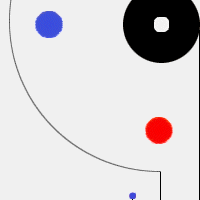|
Home » Sponsored » Pi Speakers » Three 4Pi's in Basic Black for Home Theater Build Thread
| In-wall flush mounting [message #63961 is a reply to message #63956] |
Tue, 31 August 2010 17:08   |
 |
 Wayne Parham
Wayne Parham
Messages: 18689
Registered: January 2001
|
Illuminati (33rd Degree) |
|
|
All of my speakers respond well to this kind of placement. They are all designed to be used in quarter-space or eighth-space, and I don't use baffle step compensation filters. My thinking has always been that the baffles are rather large, so the transition happens in the lower midrange, close to where room modes take over. That's not where you really want to bump up the power, but then again, you don't want it to be lean down low either. So instead of including baffle step filters, I've suggested placements that reduce the problem acoustically. And as for room modes, a different but related matter, they can be effectively mitigated using a multisub approach.
Placing the speaker close to the boundary reduces baffle step, among other things. The closer the speaker baffle is to the back wall, the less the baffle step. If you can recess the speaker in the wall flush, the baffle step goes to zero. It also makes the reflection off the back wall go to zero too. Those are both important goals.
Some people try to reduce the negative influence of the back wall reflection by moving their speakers out away from the back wall. That's reasonable, a good idea, I suppose. It reduces the amplitude of the rear reflection because of distance. It increases the delay of the reflection too. There's a window of time where reflections are most troublesome, and by moving the speakers away from the back wall, they hope to decrease the early reflections, and to delay them out of that window.
But I go the other way, for several reasons. It is hard to space the speakers far enough away from the back wall to do much good in most living spaces. Most rooms in peoples' homes aren't big enough. So I use another approach. I prefer to use directional speakers that limit the rear wave in the first place, which decreases the amplitude of the rear wave by virtue of directivity. Instead of trying to make the rear reflection late, I try to make it so early it is indistinguishable from the direct wave. As you decrease the distance from baffle to boundary, when the distance becomes zero, so does the reflection delay. So that's the direction I go.
That's why I like using directional speakers designed to mount right up against the rear wall or in corners. The rear wave reflection becomes less of a problem and baffle step is nearly eliminated, because there is so little transition region. If the speakers are mounted with their baffles completely flush with the walls, or their drivers mounted at the apex of the corners, baffle step and rear reflection are completely eliminated.
|
|
|
|
Current Time: Wed May 15 02:59:49 CDT 2024
|










